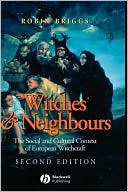Category Books
- Fiction Books & Literature
- Graphic Novels
- Horror
- Mystery & Crime
- Poetry
- Romance Books
- Science Fiction & Fantasy
- Thrillers
- Westerns
- Ages 0-2
- Ages 3-5
- Ages 6-8
- Ages 9-12
- Teens
- Children's Books
- African Americans
- Antiques & Collectibles
- Art, Architecture & Photography
- Bibles & Bible Studies
- Biography
- Business Books
- Christianity
- Computer Books & Technology Books
- Cookbooks, Food & Wine
- Crafts & Hobbies Books
- Education & Teaching
- Engineering
- Entertainment
- Foreign Languages
- Game Books
- Gay & Lesbian
- Health Books, Diet & Fitness Books
- History
- Home & Garden
- Humor Books
- Judaism & Judaica
- Law
- Medical Books
- New Age & Spirituality
- Nonfiction
- Parenting & Family
- Pets
- Philosophy
- Political Books & Current Events Books
- Psychology & Psychotherapy
- Reference
- Religion Books
- Science & Nature
- Self Improvement
- Sex & Relationships
- Social Sciences
- Sports & Adventure
- Study Guides & Test Prep
- Travel
- True Crime
- Weddings
- Women's Studies
Witches And Neighbours 2e » (2nd Edition)

Authors: Briggs, Anthony Briggs
ISBN-13: 9780631233268, ISBN-10: 0631233261
Format: Paperback
Publisher: Wiley, John & Sons, Incorporated
Date Published: February 2002
Edition: 2nd Edition
Author Biography: Briggs
Robin Briggs is Senior Research Fellow at All Souls College, Oxford where he has worked since his election as Prize Fellow in 1964. He was educated at Felsted School and Balliol College, Oxford and he is the author of The Scientific Revolution of the Seventeenth Century (1970), Early Modern France (2nd Edition 1998), and Communities of Belief: Cultural and Social Tensions in Early Modern France (1989).
Book Synopsis
Witches and Neighbours is a highly original and unconventional analysis of a fascinating historical phenomenon. Unlike other studies of the subject which focus on the mechanisms of persecution, this book presents a rich picture of witchcraft as an all-pervasive aspect of life in early modern Europe.
This book is not available from Blackwell in the United States and the Philippines.
- A fascinating and accessible account of the central role of witchcraft in early modern Europe.
- A standard work on the subject of witchcraft now available in a revised edition with an updated bibliography.
- Presents an unconventional interpretation of the role and influence of witchcraft
- Argues that witchcraft was as complex and changing as the society of which it formed a vital part.
- Draws on a range of original sources to vividly illustrate the arguments.
Kirkus Reviews
An impressively researched cross-cultural exploration of a disturbing phenomenon in European history.
Religion scholar Briggs (Oxford Univ.), concentrating on the period from the 14th to the 17th centuries, offers a thought-provoking analysis that disabuses the reader of some commonly held stereotypes about witchcraft. The most startling fact is that not all of the accused were women. Men accounted for approximately 25 percent of accused witches in early modern Europe, though in France men composed half (and in Iceland 90 percent) of those on trial. Indeed, it is the pan-Europeanism of this book that is so novel and refreshing. Rather than merely trotting out the same hackneyed examples from Britain, France, and Germany, Briggs highlights the regional diversity of beliefs about witchcraft and official attitudes toward it in Sweden, Hungary, Italy, and elsewhere. His overarching point is that the cultural gestalt that facilitated witchcraft's magic worldview was widespread in Europe, as was the misperception about these beliefs, though the machinery of accusation, trial, and execution was located on the local level, generally in small rural communities. Briggs has painstakingly researched the records of these village trials and enriches his narrative with the poignant personal testimonies of both accusers and accused. "Unneighborliness," Briggs argues, was a principal element in many of these cases: In peasant villages, where families depended heavily on their neighbors as insurance against hard times, any hint of stinginess, envy, or malice suggested that more sinister forces might be at work. But Briggs fails to adequately explain the demise of witchcraft in most European cultures in the 17th century. Given the tremendous amount of local variation in belief and practice, it is significant that witches' trials and executions faded all over the European scene at approximately the same time.
The circumstances surrounding the decline of a belief in witchcraft deserve an additional volume from this able researcher and deft writer.
Table of Contents
Maps.
Preface.
Introduction.
1. Myths of the Perfect Witch.
2. The Experience of Bewitchment.
3. Supernatural Power and Magical Remedies.
4. The Projection of Evil.
5. Witch-Finders and Witch Cures.
6. Love and Hatred; Spouses and Kin.
7. Men against Women: The Gendering of Witchcraft.
8. The Age of Iron.
9. The Web of Power.
10. Internal and External Worlds.
Conclusion.
Notes.
Further Reading.
Index.
Subjects
 Witchcraft and Magic
Witchcraft and Magic  Witchcraft, Wicca & Paganism - Historical
Witchcraft, Wicca & Paganism - HistoricalNonfiction
 Social Sciences
Social Sciences  Anthropology & Archaeology
Anthropology & ArchaeologyNonfiction
 All Nonfiction
All Nonfiction  Anthropology & Archaeology
Anthropology & ArchaeologyScience & Nature
 Social Sciences
Social Sciences  Anthropology & Archaeology
Anthropology & ArchaeologySocial Sciences
 Anthropology & Archaeology
Anthropology & Archaeology  Socio - Cultural Anthropology
Socio - Cultural Anthropology
